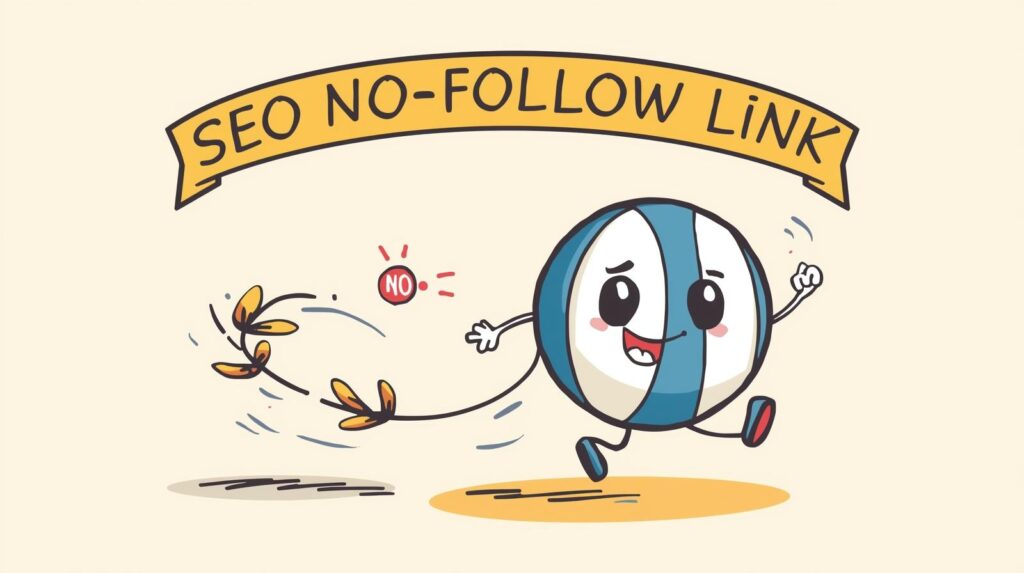A Strategic Guide for Freelancers Looking to Build Authority and Drive Results
The Bottom Line: Internal linking isn’t just about connecting pages—it’s about creating a web of authority that search engines love and readers can’t resist exploring. Done right, it can increase your organic traffic by 20-25% while keeping visitors engaged longer on your site. More importantly for freelancers, it’s often the difference between a website that converts prospects into clients and one that simply showcases your work.
Why Internal Links Are Your Secret Weapon (And Why Most Freelancers Get This Wrong)
Picture this scenario—one I’ve witnessed countless times in my years advising freelancers: You’ve just published an incredible blog post about your expertise. It took hours to research, write, and perfect. It ranks well, gets traffic, but visitors read it and bounce. Meanwhile, your competitor’s similar post not only attracts readers but guides them through a strategic journey of discovery, leading to more page views, longer engagement, and ultimately, more client inquiries.
What’s the difference? A strategic internal linking structure that most freelancers either ignore completely or implement so poorly they’d be better off without it.
Here’s the reality that might surprise you: Recent analysis of 23 million internal links across 1,800 websites revealed that pages with 40-44 internal links saw four times more traffic than those with only 0-4 links. But here’s the critical insight your competitors probably missed—this isn’t about cramming more links into your content like some desperate SEO scheme. It’s about creating meaningful connections that serve both search engines and your potential clients. The freelancers who understand this distinction are the ones charging premium rates and having clients come to them, rather than chasing after every job posting on Upwork.

The Science Behind Internal Linking Success (And Why It Matters More in 2025)
What Search Engines Actually See When They Visit Your Site
When Google’s crawlers visit your site, internal links help them “find pages” and “get context about that specific page,” according to John Mueller, Google’s Senior Webmaster Analyst. But let me explain what this really means for your freelance business in practical terms.
Think of internal links as the hallways in a well-designed office building. Without them, each room (your blog posts) exists in isolation. With strategic internal linking, you create clear pathways that guide both search engines and potential clients through your expertise in a logical, compelling way.
Internal links distribute link equity gained from external backlinks to other pages on your site. This is crucial for freelancers because it means when someone links to your popular blog post about “Content Marketing Strategies,” you can strategically direct some of that authority to your service pages, case studies, or newer content that needs a ranking boost.
Here’s where most freelancers fail: they treat each blog post as a standalone piece rather than part of a comprehensive content ecosystem that demonstrates their expertise depth.
The Real-World Results That Should Get Your Attention
The proof isn’t theoretical—it’s measurably transformative. A controlled SEO experiment on a grocery website showed a 25% uplift in organic traffic to category pages after adding strategic internal links—an additional 9,200 organic sessions per month.
But here’s an even more compelling example for freelancers: Another study found that adding internal links to underperforming product pages resulted in a 23% traffic increase, helping them reclaim top search positions. Translate this to your freelance context: your service pages, portfolio pieces, and case studies can see similar dramatic improvements with strategic internal linking.
The statistic that should really capture your attention: pages with at least one exact match anchor text in their internal links had at least five times more traffic than pages without. Five times more visibility for your expertise. Five times more opportunities for client discovery.
The Freelancer-Specific Internal Linking Challenge (And How to Solve It)
Here’s what I’ve learned from working with hundreds of freelancers over the years: your internal linking challenges are fundamentally different from traditional businesses. You’re not selling products—you’re selling expertise, trust, and results. Your internal linking strategy needs to reflect this reality.

“It’s important to look beyond rankings and rather ensure a
– Ruth Everett – Technical SEO Analyst
website is usable for everyone”.
The Authority Building Framework That Actually Works
Most SEO advice treats all websites the same. But freelancers have unique advantages and constraints that require a specialized approach:
Your Advantage: You have intimate knowledge of your content because you created every piece. You understand the connections between your different areas of expertise better than any algorithm.
Your Challenge: You probably have limited content volume compared to large businesses, which means every internal link needs to work harder.
The Solution: A hub-and-spoke model that positions your core expertise as central hubs, with supporting content radiating outward and linking back strategically.
Building Your Internal Linking Strategy: A Framework That Actually Works for Freelancers
Step 1: Audit Your Current Link Structure (The Right Way)
Before you add a single new link, you need to understand your current linking landscape. Most freelancers skip this step and start randomly adding links—a guaranteed way to dilute your link equity and confuse both search engines and readers.
Use tools like Semrush, Ahrefs, or the free Screaming Frog (limited to 500 URLs) to analyze your internal link profile. But here’s what the tools won’t tell you: you need to audit with your business goals in mind, not just SEO metrics.
Red flags specific to freelance sites:
- Orphaned portfolio pieces that showcase your best work but aren’t linked from anywhere
- Service pages that aren’t connected to relevant blog content demonstrating your expertise
- Case studies buried deep in your site structure where clients can’t find them
- Blog posts about your expertise that don’t link to ways clients can work with you
- About pages that exist in isolation rather than being woven into your content narrative
Pro insight from years of experience: Your most linked-to pages should align with your most profitable services. If your “How to Choose a Freelance Web Designer” blog post has the most internal links but you make most of your money from ongoing SEO services, your linking strategy is working against your business goals.
Step 2: Identify Your Power Pages (With Business Intelligence)
This isn’t just about finding pages with high traffic—it’s about identifying content that drives business results. Look into your website analytics, but analyze with commercial intent in mind.
Your true power pages as a freelancer:
- The Authority Builders: Blog posts that rank well for terms your ideal clients search for
- The Trust Builders: Case studies and portfolio pieces that demonstrate results
- The Conversion Drivers: Service pages and your contact/hire me sections
- The Relationship Deepeners: About page and content that shows your personality and process
Here’s a strategic insight most freelancers miss: your highest-traffic blog post might not be your most valuable page for internal linking. A blog post that attracts your ideal clients but currently doesn’t convert well might become your most valuable linking hub once properly connected to your service pages and case studies.
Step 3: Create Topic Clusters That Showcase Expertise Depth
Building the right internal link structure ensures smooth navigation of your website and takes users to the right pages they are looking for. For freelancers, this means creating content clusters that demonstrate your expertise depth while guiding prospects through your client journey.
Here’s how this looks in practice for different freelance specialties:
For a freelance content marketer:
- Pillar Page: “Complete Guide to Content Marketing for Small Businesses”
- Supporting Articles: “How to Create a Content Calendar,” “Email Marketing Best Practices,” “Social Media Content Ideas”
- Business Pages: Service offerings, case studies showing content marketing results, client testimonials
- Strategic Links: Each supporting article links back to the pillar page and to relevant service pages
For a freelance web designer:
- Pillar Page: “Essential Elements of High-Converting Website Design”
- Supporting Articles: “Mobile-First Design Principles,” “Color Psychology in Web Design,” “UX Writing That Converts”
- Business Pages: Portfolio showcases, web design packages, client process explanation
- Strategic Links: Design articles link to portfolio examples and service pages
The key insight: each content cluster should culminate in a clear path for prospects to understand how to work with you.
Step 4: Craft Strategic Anchor Text (Beyond Basic SEO)
Here’s where most advice falls short for freelancers. Yes, you need to vary your anchor text and avoid over-optimization. But more importantly, your anchor text needs to build confidence in your expertise while serving SEO goals.
Strategic anchor text for freelancers:
- Authority Building: “proven content marketing strategies” (linking to case studies)
- Service Integration: “comprehensive web design process” (linking to service pages)
- Expertise Demonstration: “advanced SEO techniques” (linking to in-depth guides)
- Trust Building: “client success stories” (linking to testimonials and case studies)
Vary the anchor texts in your internal links and steer clear of using exact matches between the anchor text and the linked page’s main topic. While exact match anchors can be powerful, overusing them appears unnatural to search engines.
But here’s the freelancer-specific insight: your anchor text should also work for skim-readers who might only scan your content. Every anchor text should clearly indicate value to potential clients.
Don’t write content for search results, write content that brings search results. Subtle differences, massive advantages. Keep it human and genuine first!
Martin Salter – FreelanceLaunchpad.com



The User Experience Factor: Making Links Work for People (Not Just Algorithms)
Can I be very clear here. You must NEVER play the “try to game search” method that so many seem to push. Eventually you will be found out and your site punished. If you start out strong with content that speaks to your audience, supports, advises, helps and engages, you will eventually be rewarded. Its not about trying to play a system, but actually providing real world useable value to your end readers and subscribers. Think about how you would want to be spoken to and given information if you were seeking answers to your own questions. That’s always a great place to start with simple SEO!
Strategic Placement for Maximum Client Impact
Strategic placement of internal links is crucial for maximizing their SEO value. Links should be naturally integrated within your content, such as in the body of your articles where they are most relevant.
For freelancers, strategic placement goes beyond SEO—it’s about guiding potential clients through your expertise in a way that builds trust and demonstrates value.
High-impact locations for freelance sites:
- Within the first few paragraphs: Link to credibility builders (case studies, testimonials)
- At problem identification points: Link to service pages that solve the problems you’re discussing
- After demonstrating expertise: Link to related in-depth content that shows knowledge breadth
- In conclusion sections: Link to next logical steps (service pages, consultation booking)
Advanced strategy I’ve seen work consistently: Create “expertise breadcrumbs” throughout your content. When you mention a complex concept, link to your detailed explanation. When you reference a client success, link to the full case study. This creates a web of authority that’s difficult for competitors to replicate.
The Engagement Connection That Drives Business Results
Internal linking directly impacts user engagement metrics that search engines monitor. When users click an internal link, they stay on your site longer instead of going back to the search results page, thus improving your dwell time.
But for freelancers, improved dwell time means something more valuable: more time for prospects to understand your expertise depth and develop confidence in your abilities.
Internal linking helps visitors find more content, explore your site further, and stay longer. It also helps search engines crawl and index your site better. This creates a virtuous cycle particularly powerful for freelancers: better user engagement signals to search engines that your content is valuable, which improves your rankings for terms your ideal clients search for.

Common Pitfalls That Kill Your Strategy (And Your Credibility)
The “More Is Better” Trap That Destroys Authority
Google doesn’t crawl pages with over 150 links, and conventional SEO wisdom suggests limiting internal links to 100-150 per page. More critically for freelancers, after a URL receives about 45-50 internal links, the effect reverses—you actually start to see diminishing returns.
I’ve seen freelancers destroy their site’s effectiveness by cramming links into every paragraph. Remember: you’re building trust, not gaming search engines. Every link should feel natural and add value for someone considering hiring you.
The Footer Link Penalty That Can Tank Your Rankings
Creating internal footer links used to be a common practice that is now obsolete. In 2013, footer links started to be hit with a penalty, and Google now counts these internal links as spam.
This is particularly relevant for freelancers because many use WordPress themes with extensive footer linking. Clean up your footer to include only essential pages: About, Services, Contact, Privacy Policy. Your expertise should be demonstrated through contextual content links, not footer spam.
The Nofollow Mistake That Wastes Your Authority
Internal links with rel=”nofollow” attributes don’t pass link equity. You typically want internal links to pass SEO value, so check your Internal Linking report for links with rel=”nofollow” and remove the attribute from any internal links you want to pass authority.
Many freelancers accidentally nofollow their internal links through plugin settings or theme configurations. Audit your internal links to ensure you’re not accidentally blocking authority flow to your most important pages.

Advanced Strategies for Competitive Advantage (The Professional Level)
The Content Bridge Technique for Expertise Expansion
Here’s a strategy I’ve used with freelancers looking to expand their service offerings: If you don’t have relevant pages to link from for your new blog post, you should come up with a plan for creating requisite blogs to establish those all-important internal links.
Real-world example: Sarah, a freelance copywriter, wanted to expand into content strategy. Instead of just adding a new service page, she created bridge content: “How Great Copy Supports Your Content Strategy,” “The Copywriter’s Guide to Content Planning,” and “Why Your Content Strategy Needs Better Copy.” Each piece linked to both her existing copywriting portfolio and her new strategy services, creating natural authority transfer.
The Authority Transfer Method That Builds Business Value
The Authority Transfer technique is a crucial method to distribute link authority to critical SEO pages of your website. Identify your highest-authority pages using SEO tools, then strategically link from these pages to newer content that needs a ranking boost.
For freelancers, this isn’t just about SEO—it’s about leveraging your successful content to build authority for your business-critical pages. Your most popular blog posts should strategically link to your service pages and case studies.
The Topic Silo Method for Expertise Demonstration
Create content silos that demonstrate expertise depth:
Silo 1: Problem Identification
- Blog posts identifying common client problems
- Links to solution-focused content
- Connections to relevant case studies
Silo 2: Solution Deep-Dives
- Detailed how-to content showing your methodology
- Links to service pages explaining how you implement these solutions
- Connections to client testimonials and results
Silo 3: Results and Proof
- Case studies and client success stories
- Links back to methodology content
- Connections to service booking pages
Measuring Your Success: Metrics That Matter for Freelance Business Growth
Key Metrics That Indicate Business Impact
Monitor these metrics to gauge your internal linking success:
- Organic traffic growth to service pages: Your blog content should drive traffic to pages that convert
- Average session duration and pages per session: Prospects should explore your expertise depth
- Conversion rate improvements on key pages: Better internal linking should improve client inquiries
- Keyword ranking improvements for commercial terms: You should rank better for terms that attract paying clients
- Reduced bounce rate on business-critical pages: Service pages and case studies should engage visitors longer
Setting Realistic Expectations Based on Real Data
Controlled tests show that strategic internal linking can yield an average ranking improvement of 1-1.2 positions for target keywords within 4 weeks. For freelancers, this improvement in visibility for key terms can translate directly to more qualified leads.
Most well-executed internal linking strategies show measurable improvements within 30-90 days. However, the business impact—more client inquiries, better lead quality, higher conversion rates—often becomes apparent even sooner as your site begins guiding prospects more effectively through your expertise.
Your 90-Day Action Plan: From Strategy to Results
Week 1-2: Foundation Assessment
- Complete link audit: Use Screaming Frog or Semrush to map your current internal linking
- Identify power pages: Analyze which content drives the most valuable traffic
- Service page optimization: Ensure your most important business pages have strategic internal links
- Fix critical issues: Remove nofollow attributes, repair broken links, eliminate orphaned pages
Week 3-6: Strategic Implementation
- Create content clusters: Group related content and establish hub pages
- Implement topic silos: Connect problem-identification content to solution-focused content to proof/results
- Optimize anchor text: Replace generic “click here” links with descriptive, authority-building phrases
- Add conversion pathways: Ensure every major blog post includes strategic links to service pages
Week 7-12: Advanced Optimization
- Content bridge creation: Develop connecting content for service expansion areas
- Authority transfer implementation: Link from your highest-performing content to newer pieces that need ranking boosts
- User experience refinement: Test and optimize the client journey through your linked content
- Monthly auditing setup: Establish regular review processes to maintain link health
The Freelancer’s Competitive Edge: Why This Matters More Than Ever
Unlike large agencies with massive content teams and established authority, you have something they don’t: agility and intimate knowledge of your content. You can implement strategic internal linking changes in hours, not months. You understand the connections between your different expertise areas better than any content team.
The Trust Factor That Converts Browsers to Buyers
Remember: content marketing is more than just an SEO technique—it’s about creating a meaningful and navigable experience for potential clients. When you master internal linking, you’re not just improving your search rankings; you’re building trust, demonstrating expertise breadth, and guiding potential clients through a journey that positions you as the obvious choice for their needs.
Your content is your competitive advantage. Internal linking ensures that advantage gets the visibility and engagement it deserves, transforming your website from a simple portfolio into a client-attracting authority platform.
Starting Your Internal Linking Transformation Today
The difference between freelancers who struggle to find clients and those who have clients seeking them out often comes down to perceived expertise and trust. Strategic internal linking helps you demonstrate both.
Start with one high-performing blog post today. Add three strategic internal links: one to a case study that proves your capabilities, one to a service page that shows how clients can work with you, and one to additional content that demonstrates your expertise depth.
This simple change—when multiplied across your content—begins to transform your site from a collection of individual posts into a comprehensive demonstration of your professional capabilities.
Your future self (and your client acquisition rate) will thank you for starting today.
Ready to implement these strategies but want expert guidance? Strategic internal linking is just one component of building a freelance business that attracts premium clients. The freelancers who succeed fastest are those who understand that every aspect of their online presence should work together to demonstrate expertise and build trust.
Your First Steps to Freelance Freedom
